| |||||
| Centuries: | |||||
|---|---|---|---|---|---|
| Decades: | |||||
| See also: | Other events of 2010 Years in North Korea Timeline of Korean history 2010 in South Korea | ||||
The following lists events that happened in 2010 in North Korea .
| |||||
| Centuries: | |||||
|---|---|---|---|---|---|
| Decades: | |||||
| See also: | Other events of 2010 Years in North Korea Timeline of Korean history 2010 in South Korea | ||||
The following lists events that happened in 2010 in North Korea .

Kim Jong Il was a North Korean politician who was the second supreme leader of North Korea. He led North Korea from the death of his father Kim Il Sung in 1994 until his death in 2011, when he was succeeded by his son, Kim Jong Un. Afterwards, Kim Jong Il was declared Eternal General Secretary of the Workers' Party of Korea (WPK).
Kim Jong Chul, sometimes spelled Kim Jong Chol, is a son of former North Korean Supreme Leader Kim Jong Il. His younger brother is current Supreme Leader Kim Jong Un. His older half-brother Kim Jong-nam was assassinated in February 2017.
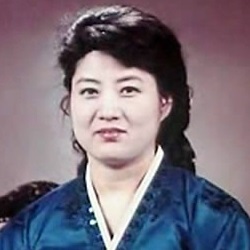
Ko Yong Hui, also spelled Ko Young-hee, was the mistress of North Korean supreme leader Kim Jong Il and the mother of his successor, Kim Jong Un. Within North Korea, she is only referred to by titles, such as "The Respected Mother who is the Most Faithful and Loyal 'Subject' to the Dear Leader Comrade Supreme Commander", "The Mother of Pyongyang", and "The Mother of Great Songun Korea".

Kim Pyong Il is the younger paternal half-brother of the former leader of North Korea, Kim Jong Il, and the only surviving son of former leader and president of North Korea Kim Il Sung. He worked as a diplomat and lived overseas between 1979 and 2019, serving in various diplomatic positions such as ambassador of North Korea to Hungary, Bulgaria, Finland, Poland, and the Czech Republic.
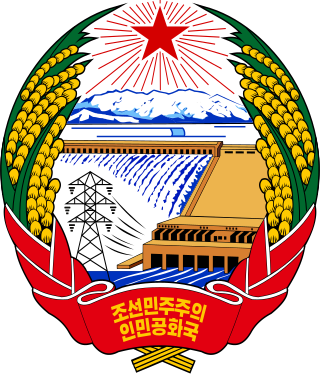
In the North Korean government, the Cabinet is the administrative and executive body. The North Korean government consists of three branches: administrative, legislative, and judicial. However, they are not independent of each other, but all branches are under the exclusive political leadership of the Workers' Party of Korea (WPK).

Kim Jong Un is a North Korean politician who has been supreme leader of North Korea since December 2011 and the general secretary of the Workers' Party of Korea (WPK) since 2012. He is the third son of Kim Jong Il, who was the second supreme leader of North Korea, and a grandson of Kim Il Sung, the founder and first supreme leader of the country.

Jo Myong-rok was a North Korean military officer who held the military rank Chasu. In 1998, he was appointed first vice-chairman of the National Defence Commission of North Korea, Director of the Korean People's Army General Political Bureau. Previously, he was the commander of the air defence forces.
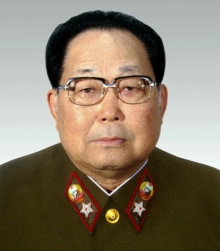
Kim Yong-chun was a North Korean soldier and politician. He was a leader of the North Korean military. He held the North Korean military rank Chasu, was Vice Chairman of the National Defense Commission of North Korea, and was Minister of People's Armed Forces. He held a minor post within the Workers Party.
Kim Yong-il is a North Korean politician who served as the Premier of North Korea from April 2007 to 7 June 2010. He was elected as Premier by the 5th session of the 11th Supreme People's Assembly (SPA) in April 2007, replacing Pak Pong-ju. He was then replaced by Choe Yong-rim after a rare parliamentary session on 7 June 2010.

The Workers' Party of Korea (WPK), also called the Korean Workers' Party (KWP), is the sole ruling party of the Democratic People's Republic of Korea, commonly known as North Korea. Founded in 1949 from a merger between the Workers' Party of North Korea and the Workers' Party of South Korea, the WPK is the oldest active party in Korea. It also controls the Korean People's Army, North Korea's armed forces. The WPK is the largest party represented in the Supreme People's Assembly and coexists with two other legal parties that are completely subservient to the WPK and must accept the WPK's "leading role" as a condition of their existence. The WPK is banned in the Republic of Korea under the National Security Act and is sanctioned by the United Nations, the European Union, Australia, and the United States.

Kim Il Sung was a North Korean politician, revolutionary, and military leader. He founded the Democratic People's Republic of Korea, commonly known as North Korea, which he led as Supreme Leader from its establishment in 1948 until his death in 1994. Afterwards, he was succeeded by his son Kim Jong Il and was declared Eternal President.
Choe Yong-rim is a North Korean politician who served as the Premier of North Korea from June 2010 to April 2013 and was a member of the 6th Presidium of the Workers' Party of Korea. He has been described by The New York Times as a "KWP insider" and a "friend of Kim Jong-Il's family." He is honorary vice-president of the Presidium of the Supreme People's Assembly, the country's parliament.
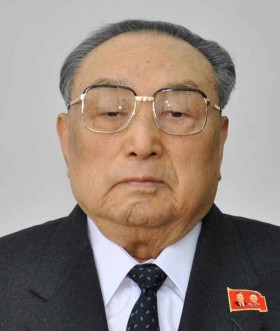
Kim Yong-ju was a North Korean politician and the younger brother of Kim Il Sung, who ruled North Korea from 1948 to 1994. Under his brother's rule, Kim Yong-ju held key posts including Politburo member in the Workers' Party of Korea (WPK) during the 1960s and early 1970s, but he fell out of favour in 1974 following a power struggle with Kim Jong Il. From 1998 until his death in 2021, he held the ceremonial position of Honorary Vice President of the Presidium of the Supreme People's Assembly (SPA), North Korea's parliament.

The death of Kim Jong Il was reported by North Korean state television news on 19 December 2011. The presenter Ri Chun-hee announced that he had died on 17 December at 8:30 am of a massive heart attack while travelling by train to an area outside Pyongyang. Reportedly, he had received medical treatment for cardiac and cerebrovascular diseases, and during the trip, Kim was said to have had an "advanced acute myocardial infarction, complicated with a serious heart shock". However, it was reported in December 2012 by South Korean media that the heart attack had instead occurred in a fit of rage over construction faults in a crucial power plant project at Huichon in Chagang Province.
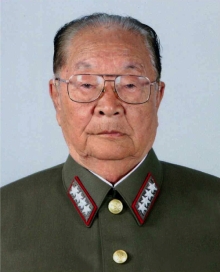
Jon Pyong-ho was a North Korean officer and politician who served as the Chief Secretary of the Korean Workers Party (KWP) Committee of the North Korean Cabinet, and director of the DPRK Cabinet Political Bureau before his retirement in 2010. Jon was described as the 'Chief architect of North Korea's nuclear programme'. Jon was a general of the Korean People's Army and a close adviser to the late Kim Jong-il.

The Kim family, officially the Mount Paektu bloodline (Korean: 백두혈통), named for Paektu Mountain, in the ideological discourse of the Workers' Party of Korea (WPK), and often referred to as the Kim dynasty after the Cold War's end, is a three-generation lineage of North Korean leadership, descending from the country's founder and first leader, Kim Il Sung. Kim Il Sung came to rule the north in 1948, after the end of Japanese rule split the region in 1945. Following his death in 1994, Kim Il Sung's role as supreme leader was later passed on to his son, Kim Jong Il, and his grandson, Kim Jong Un. All three leaders in different generations have served as leaders of the WPK and served as North Korea's supreme leaders since the state's establishment in 1948.
Events from the year 1972 in South Korea.

Upon its liberation in 1945 and subsequent foundation in 1948, North Korea adopted national symbols distinct from the national symbols of South Korea. The traditional flag of Korea, the Taegukgi, and the symbol Taeguk, were swapped for socialist symbols.

The Order of Kim Il Sung (Korean: 김일성훈장) is the highest order of North Korea, along with the Order of Kim Jong Il, and only second to one honorary title, the Hero of Labour.

The Order of Kim Jong Il is a North Korean order named after Kim Jong Il, the former leader of North Korea. It is the highest order of North Korea, along with the Order of Kim Il Sung, and only second to one honorary title, the Hero of Labour.